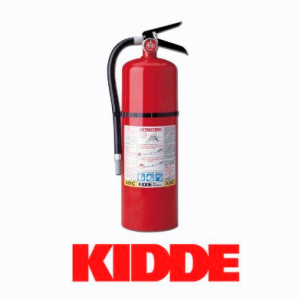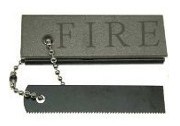 Homes are much safer now than they were decades ago, and yet fires continue to claim lives. Fires can happen in any home, but there are steps you can take to make your property safer. Here are a few precautions you should take to ensure that your home and family are as safe as possible.
Homes are much safer now than they were decades ago, and yet fires continue to claim lives. Fires can happen in any home, but there are steps you can take to make your property safer. Here are a few precautions you should take to ensure that your home and family are as safe as possible.
Plan and Educate
You should know how family members can get out of different rooms in event of fire. Install special ladders in second-floor bedrooms, and take the time to teach the children about the fire plan. Every family member should know how to escape from different rooms, and they should practice it a few times to be prepared for an emergency. Have a designated meeting area outside of the house where everyone can gather after a fire.
Smoke Detectors – One isn’t Enough
One smoke detector on the mail floor is not enough. You should have a smoke detector on each floor of the home, and there should be one in the hallway outside of all bedrooms. Change the batteries when you set the clocks forward and back in the spring and fall, and test them occasionally to be sure they are working.
Picture Credit- Kidde Pro 10 MP Fire Extinguisher, Red
Banish Clutter for Safety
Clutter is an eyesore, and it can also become a death trap in an emergency. Even a harmless pile of books in the hallway can cause you to trip when you’re in a hurry, and that could mean the difference between life and death. Keep hallways, stairwells and the center areas of rooms clear from clutter and debris.
Smart Habits for Electricity Use
The lessons of a few decades ago still hold true today. Heavy appliances like portable air conditioners should always be plugged into a grounded wall outlet instead of an extension cord. Never layer extension cords together to avoid starting a fire. GFCIs are readily available, and they should be installed at any outlet within six feet of a sink. If cords or extensions are frayed, they should not be used. Replace them immediately for safety.
Serious Electrical Warning Signs
Flickering lights are annoying, and they are also a warning sign of dangerous situations. It could be that circuits are overloaded and may catch on fire, or there may be frayed wiring creating a hazardous condition. Another warning sign is breakers that trip frequently. If you are living with these annoying problems, call an electrician to investigate the problem and correct it before a fire starts.
Chimney Dangers
Creosote builds up inside the chimney and can start a fire. Have your chimney annually before you start using it in the fall. When you know it’s clean, you can use it without fear of starting a deadly chimney fire. Avoid other hazards by burning only small amounts of paper or cardboard at a time.
Kitchen Concerns
Most fires start in the kitchen for obvious reasons. Make your cooking time safer by staying in the kitchen when using the range. Alcohol and cooking don’t mix, so wait until after you’ve made dinner to enjoy that cup of wine. Cooking while exhausted or under the influence of drugs is also dangerous.
Heating Sources and Flammable Objects
A space heater is great for a room that tends to be cold, but you have to use it with care. Make sure it has a clearance all the way around it of several feet. Make sure it’s on a firm surface, and keep it out of traffic patterns where it might be knocked over. The furnace and water heater should also have a clean zone around them where flammable objects are never placed.
With these simple tips, you can make your home safer from fire. Knowing what to do in case of a fire can save your life, but it’s also important to take steps to prevent fires from starting. Protect your family and your home by taking the time to follow these important precautions.
Byline
This article was composed by Roy McClure for the team at maximumsecurity.com; they have a terrific selection of safes for home security and protection of valuables.









